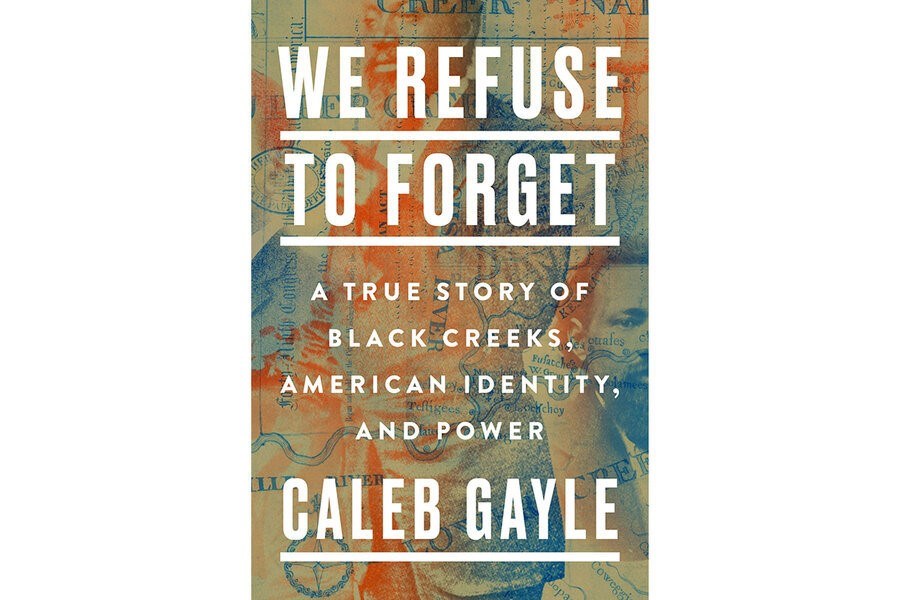REPRINTED WITH PERMISSION FROM THE CHRISTIAN SCIENCE MONITOR
“We Refuse to Forget” explores the situation of Black members of the Creek Nation in the 1800s, and their descendants in the 20th century.
 "We Refuse to Forget: A True Story of Black Creeks, American Identity, and Power," by Caleb Gayle, Riverhead Books, 272 pp.Christian Science Monitor
"We Refuse to Forget: A True Story of Black Creeks, American Identity, and Power," by Caleb Gayle, Riverhead Books, 272 pp.Christian Science Monitor
June 22, 2022
At the conclusion of the United States Civil War in 1865, Union General William Tecumseh Sherman signed an order dividing confiscated Confederate land – which itself had been confiscated from its Indigenous inhabitants – into plots intended for formerly enslaved people. This agreement became known by the famous phrase, “40 acres and a mule.” After President Abraham Lincoln’s assassination, however, his successor, Andrew Johnson, reversed the order, restoring the land to its Confederate owners.
In his eye-opening new book, “We Refuse to Forget: A True Story of Black Creeks, American Identity, and Power,” Caleb Gayle traces the fascinating and largely forgotten history of Black members of the Creek Nation, who were able to acquire land from the government.
Addressing the reader directly, Gayle references the erasure of Black Native identity from the face of contemporary history, writing, “It is puzzling for you to hear today of people who were both Black and Indian.” He adds that being “both fully Creek and fully Black seems nearly impossible,” even “contradictory.” Contact between the Creek Nation and Africans, he explains, likely began with Spanish conquistador Hernando de Soto’s brutal 16th-century expedition to North America. Some of the enslaved Africans the conquistador brought with him escaped and sought refuge with Native tribes.
The Creek Nation also enslaved people, but unlike white Europeans in North America, they did not employ a system of chattel slavery, in which the enslaved and their offspring were permanently held as property. Their system was more “fluid and dynamic,” Gayle writes. People of any race could be enslaved, and slavery was not considered a perpetual state. Enslaved people could transition out by marrying into the tribe, for instance, in which case they would be accepted as full citizens.
Gayle, a journalist and journalism professor at Northeastern University, tells of how one 19th-century Black Creek citizen, Cow Tom, served as an interpreter and negotiator, playing “a special role in bridging the gap between the Creek world and that of the ever-growing world of this newer, whiter America.” Cow Tom survived the forced relocation of the Trail of Tears, eventually settling with the tribe in present-day Oklahoma. He became a leader of the Creek people and in 1866 negotiated a treaty with the U.S. government that guaranteed citizenship rights for all Black people in the tribe. At that time, Gayle reports, there were roughly 1,600 free Black Creek persons in a nation of 13,500 (many had perished during the catastrophic westward journey).
Page created on 7/18/2022 12:33:34 AM
Last edited 7/18/2022 1:33:59 AM
